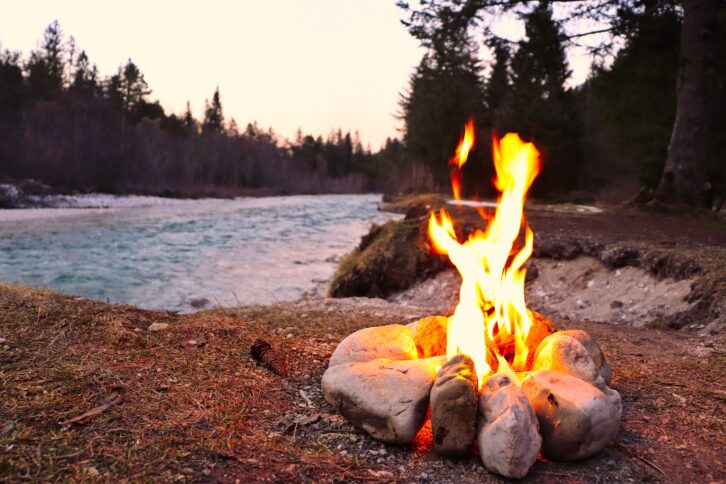I used to teach fire building at Henson Scout Reservation during my teenage years. Kids love to set things on fire, so it wasn’t hard to fill the classes up. The funny thing about starting a fire is that it looks easy but it’s not. Don’t tell that to a young Scout, though. Just give them a pack of matches, point them in the direction of something flammable, and tell them to go wild.

The results are always the same. Kids run pell-mell in every direction, anxious to burn down the forest as quickly as possible. Everything gets quiet for a few minutes as they kneel over their makeshift campfires, frantically striking match after match. I’ve never seen a single fire get going this way, but it’s a really effective way to get their attention. After another five minutes I’d usually turn to them and say, “Okay guys, do you want a little guidance?” They’d come shuffling over dejectedly and slump down, eyes downcast, but still brimming with the anticipation of learning the art of incendiary alchemy.
After I had the Scouts’ attention, I would always begin the same way. We’d go through the most important rule of fire building (“Safety!”) and then proceed on to the basics. I explained that patience was their best friend and big fires start as small fires. I split them up into teams to gather the four types of fuel (tinder, kindling, fuel, and bulk fuel — the last one always had to be pronounced loudly with a Hanz & Franz muscle arms pose — “BULK FUEL!”).
Also by Henry Clifford: 5 AI Tools You Should Be Using in Your CI Business Right Now
Each team wanted to clobber the other and soon we always had more than enough wood to get a good blaze going. I’d then grab a handful of tinder (think pine needles or cedar bark) and show them how to lay it on the ground behind a large log that doubled as a windbreak. I then gingerly laid some kindling sticks (no more than pencil width) over the tinder. That was enough. If it was a sunny day, I’d whip out a magnifying glass and focus the light beam on the tinder for a snazzy parlor trick. Smoke soon followed and I stuck my head down next to the plume and started gently blowing. Soon a small flame would flicker up and the game was afoot. Still blowing, the small kindling would catch and I started feeding the tiny bird’s nest more and more wood. Before long we had a decent blaze going. I then doused the flames and pointed to each team. “Okay,” I would yell, “who thinks they can get a fire going now?” A dozen arms shot up in unison. The same teams would then compete against one another to burn a piece of binder’s twine tied taut between two upright sticks shoved in the ground.
The rest of the lesson pretty much took care of itself with a winner emerging (or, more often than not, with nobody burning the string). I left them with the admonition that there were three key secrets to getting better at fire building: practice, practice, practice!
Our camp director, a legend named Ray Teat, usually spent his days walking around Henson doing his best to keep the machine oiled. Since this machine was staffed by a bunch of teenagers, he had his hands full 24/7, worrying about campers and the young adult babysitting requirements of 15–17-year-old counselors away from home with idle time. I’d like to say I was a great employee, but let’s just say I needed a little refining and Ray, for some reason, decided to keep me employed for seven straight summers. I owe him a great debt for that.
Also by Henry Clifford: Everything I Ever Needed to Know I Learned at Philmont
One day Ray was doing his rounds and stopped to watch my fire-building class for a bit. We eventually wrapped up and he strolled over. “Nice job,” he said. “It’s not your first time, but it’s their first time.” In classic Ray Teat fashion, that was it. He walked off and left me to ponder his message. I got its meaning in the moment, and it’s kept paying dividends across the years.
Why did I just tell you a story about teaching fire building at a Boy Scout camp in the ’90s? I’ve tried to keep Ray’s message front and center in all parts of my life, including business. It’s hard work, but we always try to remember that while we may be home technology experts, our customers most likely aren’t, and everything that we call routine is novel for them. It’s a constant daily battle to message this throughout the company, but make no mistake, I credit Ray’s message with our hundreds of 5-Star reviews. All it requires is a little patience, sometimes stepping back from the routine and a desire to keep things fresh.
What are you doing to keep in mind that, while it’s not your first time, it’s your customers’ first time?
Stay frosty, and see you in the field.







